Architecture
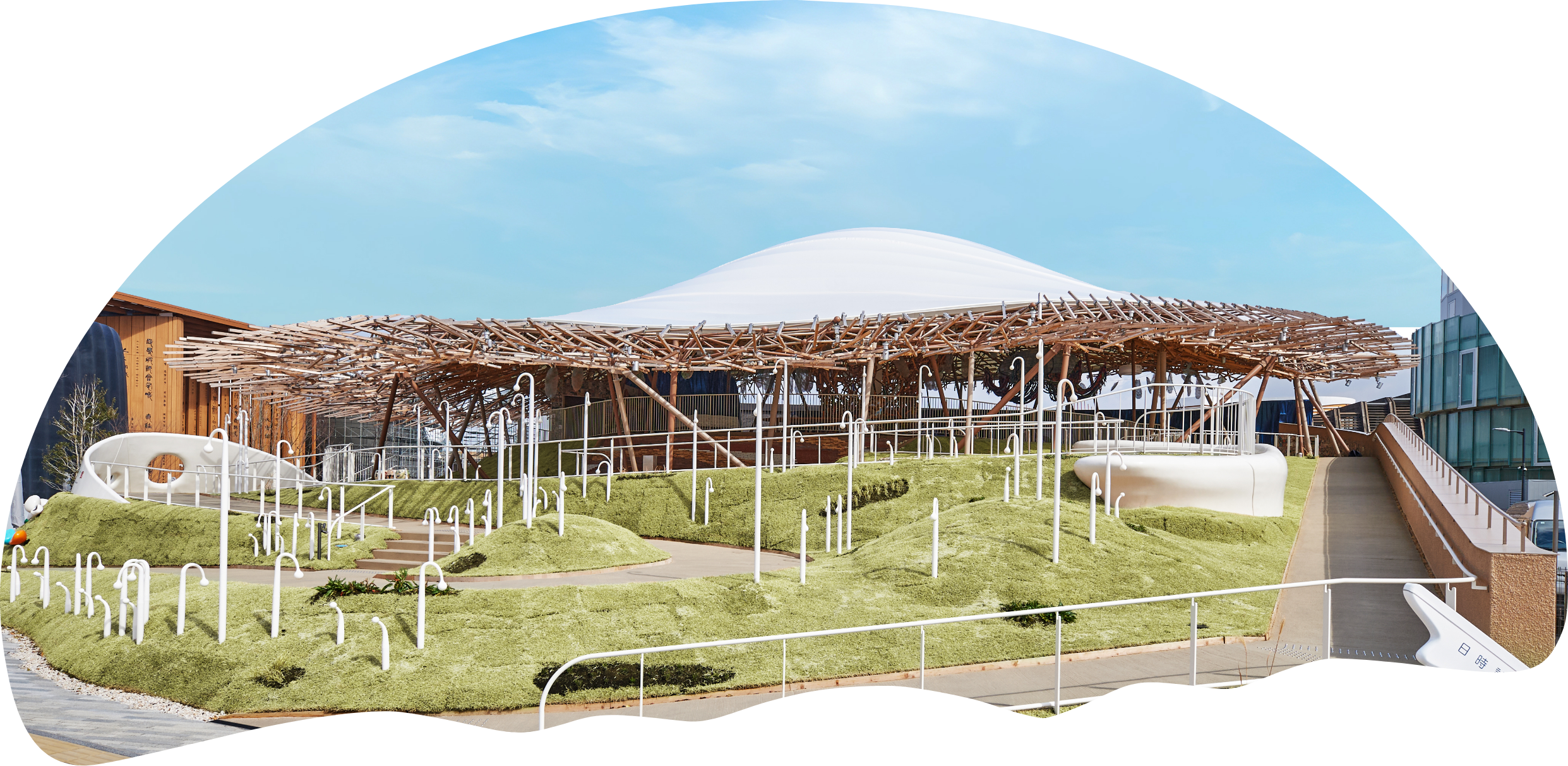
Why “Jellyfish Pavilion”?
Jellyfish are strange creatures with no brain or heart, yet they possess poison. Their ambiguity and symbolism naturally emerged in our conversations as something that mirrors human energy and creativity. We entrusted the jellyfish with our vision as a “question” that holds what cannot be fully explained in words.
The Jellyfish Pavilion was built with architect KOBORI Tetsuo, who in the spirit of co-creation worked with the Daiwa House Group playing in a central role. They worked under the philosophy of “creating a place, not a building” and held the belief that a place is a living entity that can continually change.
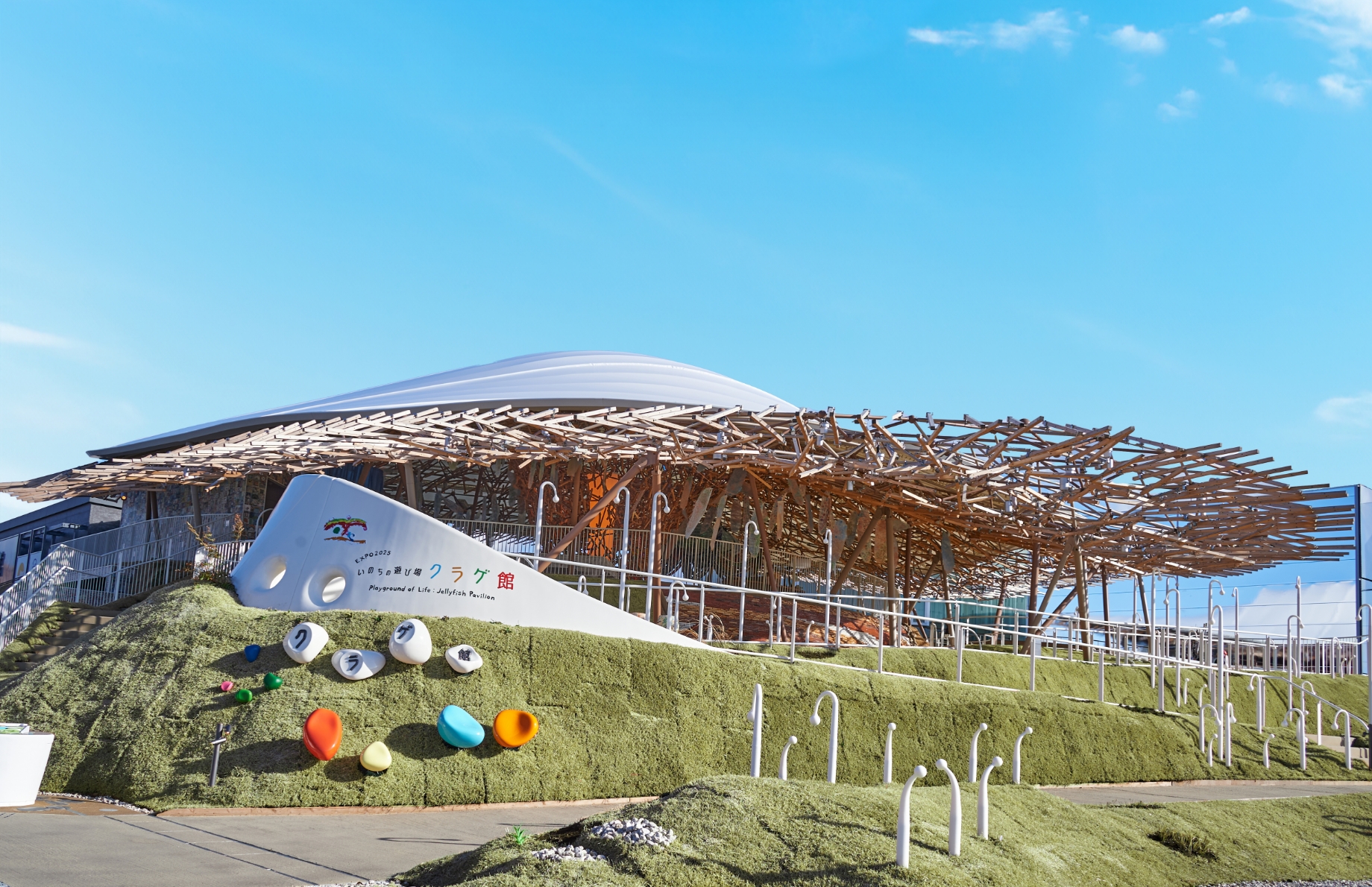
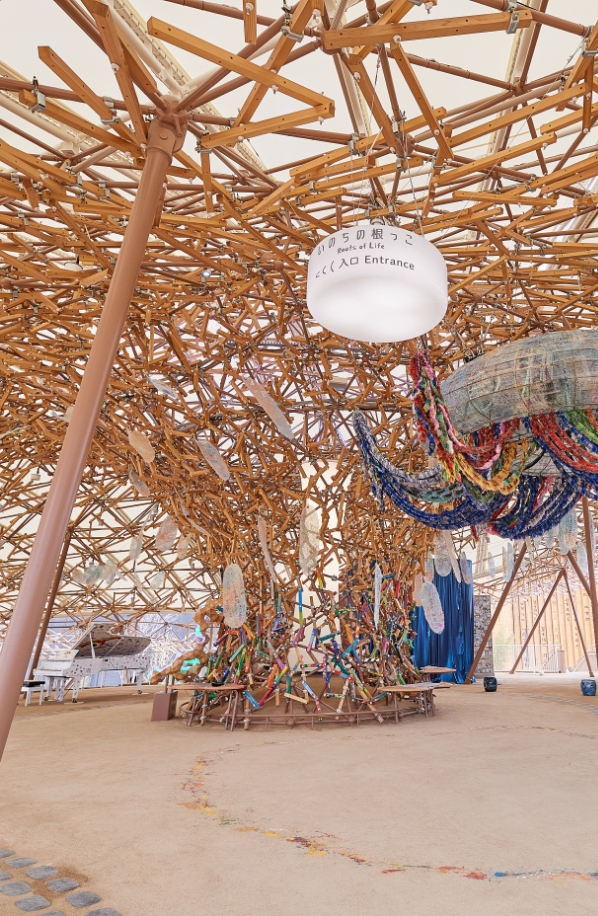
The large roof, which is the symbol of the Jellyfish Pavilion, is made of a translucent membrane that lets in natural light while maintaining an appropriate internal temperature. It has a truss structure made up of thousands of steel beams of different lengths arranged in a triangular pattern.
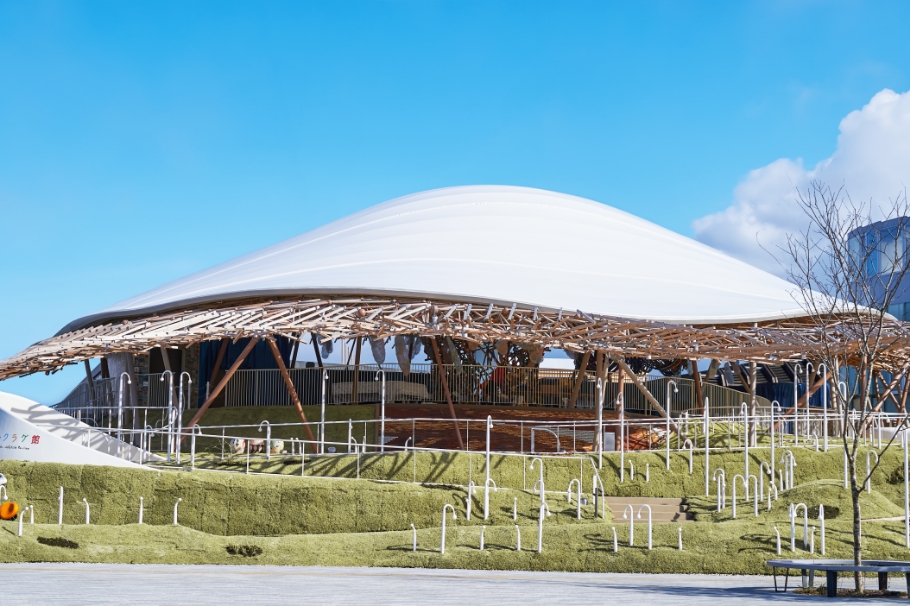
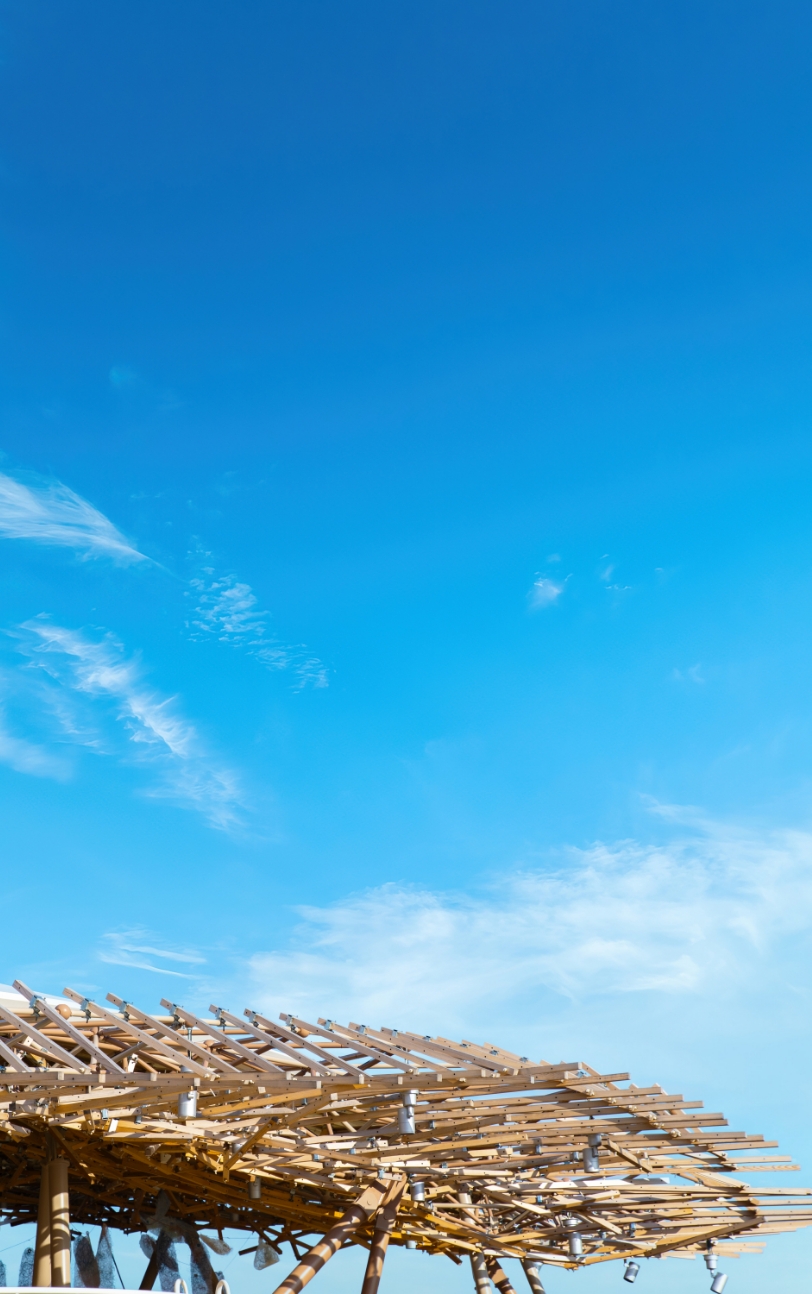
The pieces of wood in the "Tree of Creation" are spread across the roof, and while safety has been carefully calculated to ensure it is safe, the edges are not tightly fastened, leaving a certain amount of wiggle room, as to let the vibrations help people feel a sense of connection with the structure.
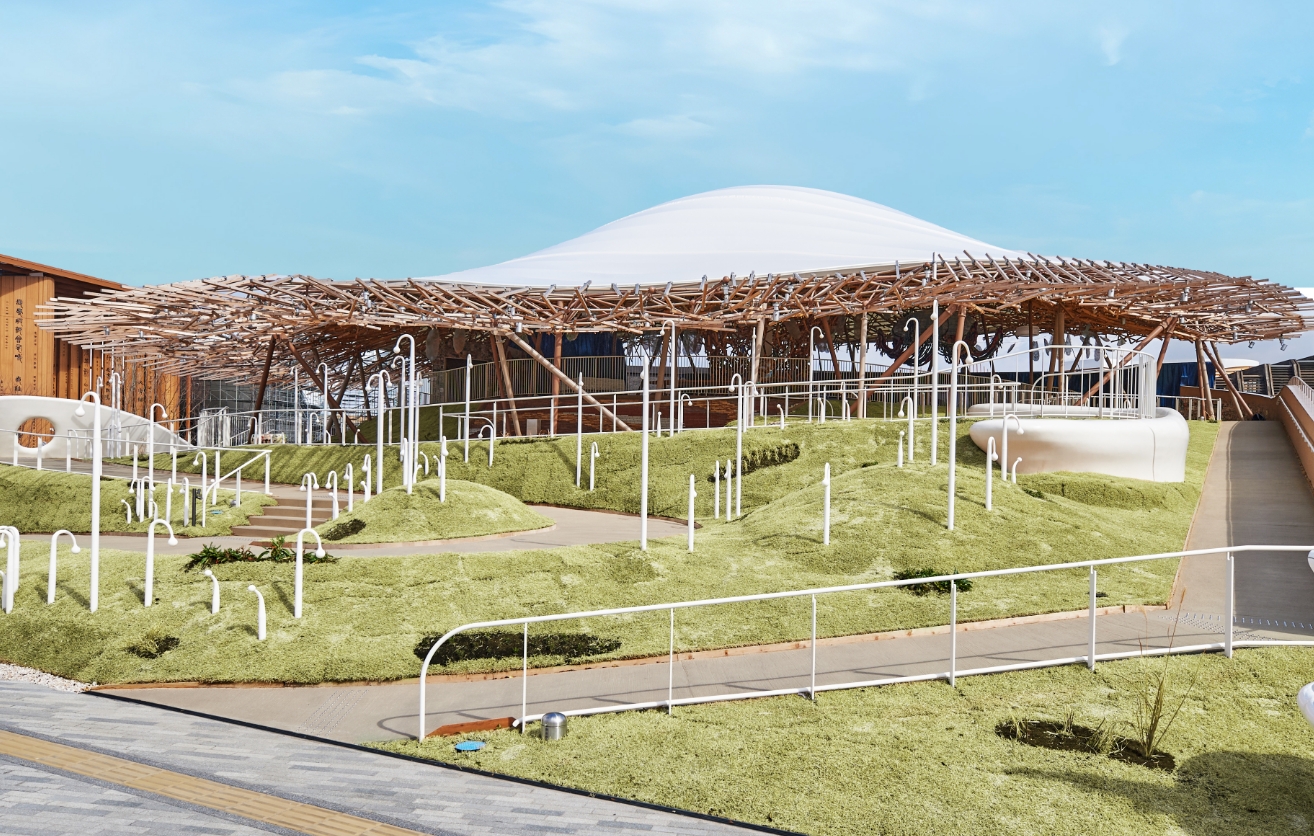
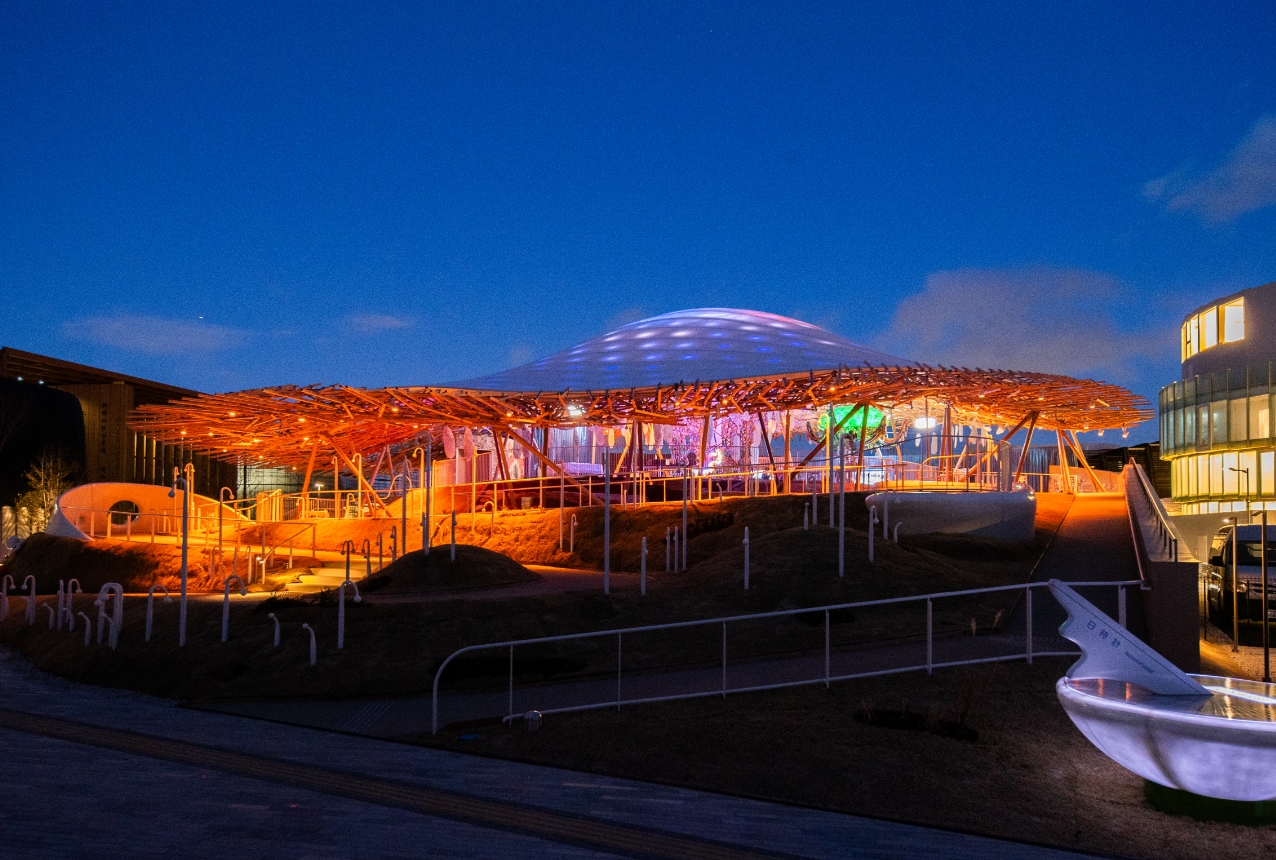
The Jellyfish Pavilion was created based on the philosophy of “creating a ‘place,’ not a building” and that a “place is a living thing that can always change,” guided by architect KOBORI Tetsuo, who values the spirit of “co-creation,” and led by the Daiwa House Group.
The above-ground portion of the Jellyfish Pavilion has no walls, with only a large roof over a hilltop, making it a semi-outdoor space.
By climbing the spiral slope, visitors reach the top of the hill. We want to recreate here the feeling of freely playing in nature.
Like traditional Japanese homes where sliding shoji screens can transform a room from a living area to a bedroom, this space is designed to be “available,” unrestricted in purpose.
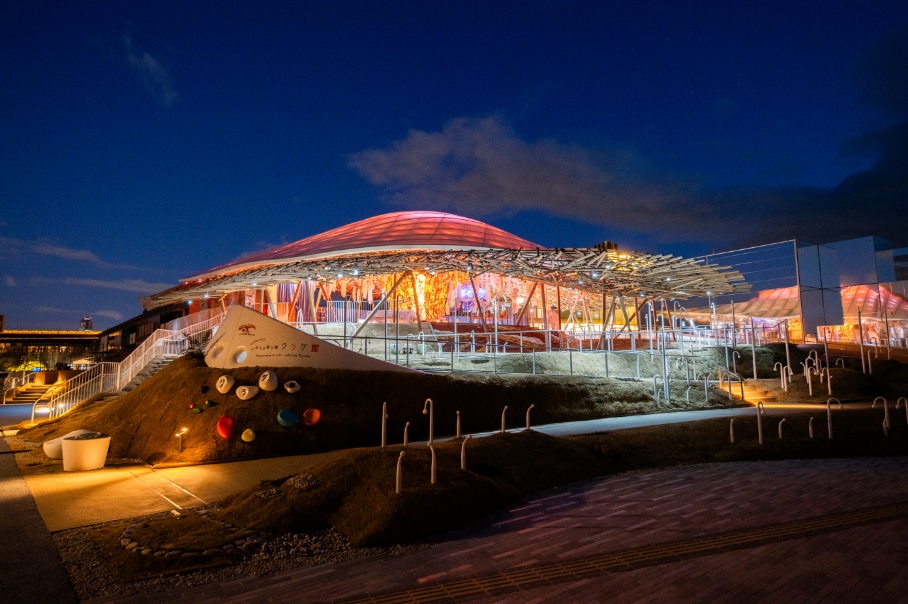
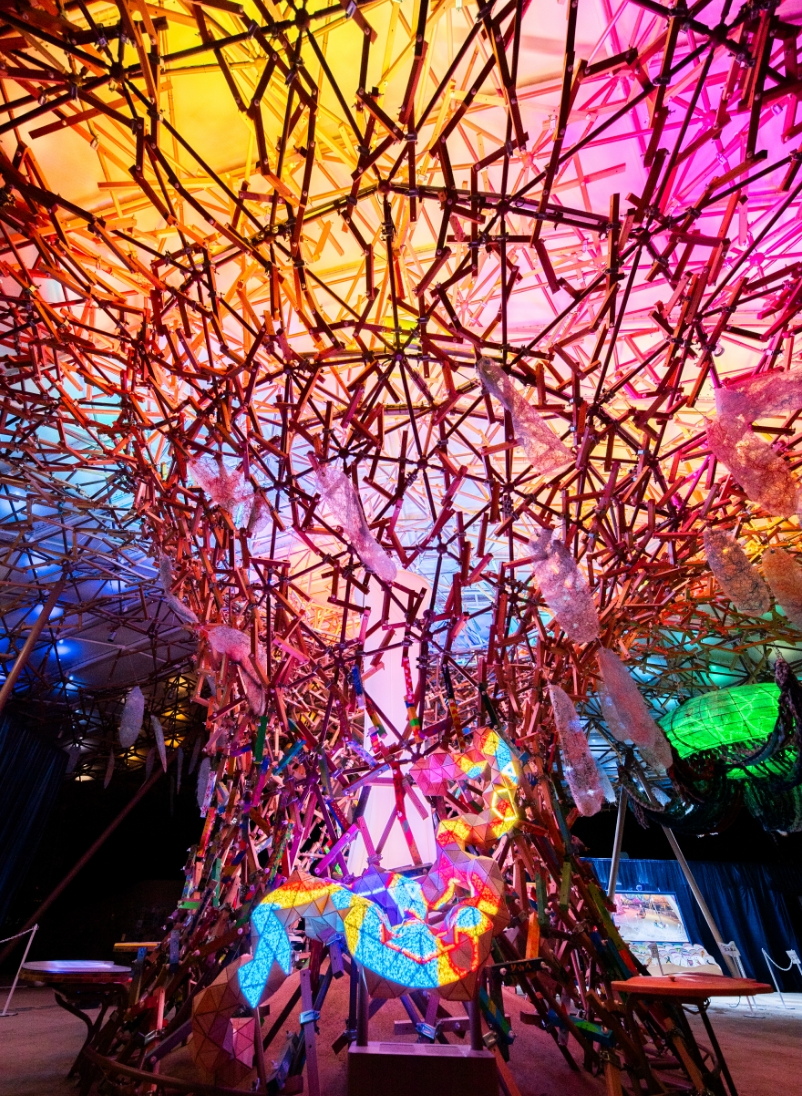
Standing beneath the large roof is the symbolic “Tree of Creation,” an iconic structure made by combining six different lengths of Yoshino cedar. Created using an algorithm inspired by the strange movements of slime molds, it has an organic, gentle undulation that feels neither spherical nor oval.
Jellyfish Pavilion
Architecture
Tetsuo Kobori
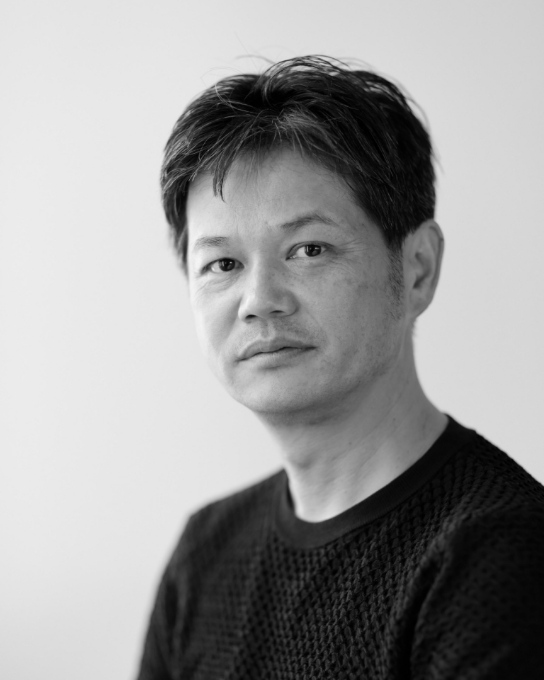
Architect / Professor at Hosei University
KOBORI Tetsuo
Founded KOBORI Tetsuo Architects in 2008.
In 2017, received both the Architectural Institute of Japan Award and the JIA Japan Architecture Grand Prize for the “ROKI Global Innovation Center,” and was also recognized internationally with the Dedalo Minosse Special Prize.
In 2019, won the JIA Japan Architecture Grand Prize again for the “NICCA INNOVATION CENTER,” making him the first Japanese architect to win the Grand Prize twice.
KOBORI is known for co-creating extremely high-quality spaces through workshops, respecting climate, region, and history.
His team also designed Daiwa House Group’s Mirai Value Co-Creation Center “Kotokurie,” which won “Best of Best” in the international AMP (The Architecture MasterPrize 2023) competition among projects from 81 countries. This follows its earlier awards: the Wood Design Award, Nikkei New Office Award, and IDA 2022.
He has also been selected as the architect for new projects like the new San-ai Dream Center in Ginza and the new Imperial Theatre.
